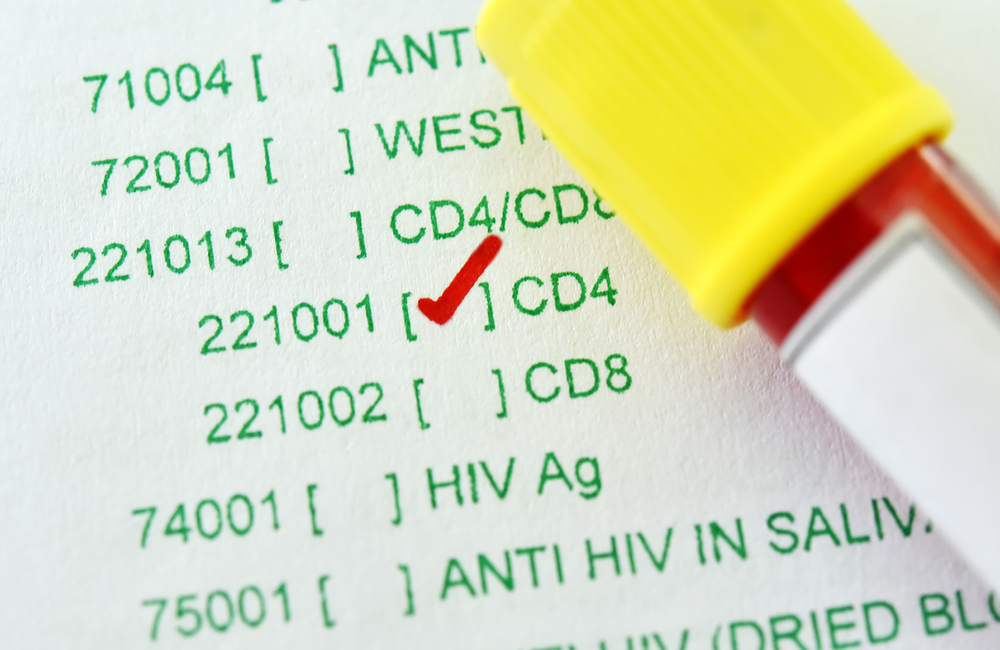
The development of anal cancer in people living with HIV is associated with a history of prolonged or severe immune suppression, a large North American study of anal cancer risk has reported. Having a CD4 count below 50 at some point in the previous eight and a half years or a longer period with a CD4 count below 200 each carried a higher risk of developing anal cancer, the study found.
Although anal cancer is less common in people living with HIV than cancers such as non-Hodgkin lymphoma or lung cancer, people living with HIV have a much higher incidence of anal cancer than the rest of the population.
In a study published in 2012, the North American AIDS Cohort Collaboration on Research and Design (NA-ACCORD) analysed findings from 13 US and Canadian studies. They found that in a group of 1000 gay men living with HIV, followed for 10 years, around 13 will develop anal cancer during that time. Risks were lower for heterosexual men (5 in 1000) and women living with HIV (3 in 1000).
Knowing which patients are at higher risk of developing anal cancer may help doctors decide who should be screened more frequently for anal cancer.
Researchers from NA-ACCORD have now published a much larger analysis of 21 cohorts in the journal Clinical Infectious Diseases. These cohorts included 102,777 people living with HIV recruited between 1996 and 2014.
They wanted to find out what effect a history of immunosuppression and untreated HIV infection had on the risk of developing anal cancer. They investigated whether having an extremely low CD4 cell count in the past (below 50, profound immunosuppression) was more important than having a prolonged period of immunosuppression (CD4 count below 200).
They also investigated whether more recent immunosuppression influenced the risk of anal cancer.
The study population was 85% male, 44% white, 40% black, just over half (57%) began follow-up between 1996 and 2003, and 57% were already aged 40 years or over when follow-up began.
There were 492 cases of anal cancer diagnosed during the follow-up period. When investigators looked at 34,625 people who had at least 8.5 years of follow-up, they found 170 cases of anal cancer (5 in 1000).
Using CD4 count and viral load data, investigators compared the predictive value of different measurements.
They found that the most robust predictors of anal cancer in people living with HIV in North America were:
- A longer duration with a CD4 count below 200 in the follow-up period between 8.5 years and 4.5 years in the past (hazard ratio, 100% of time vs 0%: 3.1; 95% CI 1.5-6.6).
- Lowest-ever CD4 count in the past 8.5 years (excluding most recent 6 months). A CD4 count below 50 in this period was the strongest predictor (hazard ratio, <50 vs >500: 13.4; 95% CI 3.5-51).
These risk factors did not differ between gay and bisexual men and other risk groups. A longer history of antiretroviral treatment did not affect the risk of anal cancer. Peak viral load levels above 100,000 copies/ml ceased to be significant in the final analysis, emphasising the importance of immunosuppression as a risk factor.
"Anal cancer incidence has decreased since 2008, suggesting that earlier treatment is having an impact on the risk of developing anal cancer."
These findings indicated “a key role for severe, prolonged immunosuppression in anal carcinogenesis; and favoured a greater role of immunosuppression at earlier compared with late phases of anal carcinogenesis,” the investigators say. Immunosuppression below 200 in the previous 4.5 years did not carry the same risk and the investigators think that it may be too recent to affect the course of anal cancer development.
They say that the impact of immunosuppression further back in time on anal cancer risk may be explained by the association of low CD4 count with increased anal human papillomavirus (HPV) infection, greater amounts of HPV DNA, infection with more HPV types, higher incidence of anal intraepithelial neoplasia and faster progression to high-grade squamous intraepithelial lesion (HSIL) and anal intraepithelial neoplasia grade 2-3 (AIN 2-3). Immunosuppression may have a less critical effect on progression from HSIL and AIN 2-3 to anal cancer, they say. Instead, HPV-related genetic changes and smoking may be more important as later-stage risk factors.
Earlier HIV diagnosis and ART initiation prevents severe immunosuppression. Anal cancer incidence has decreased since 2008, suggesting that earlier treatment is having an impact on the risk of developing anal cancer. Vaccination against HPV in young gay and bisexual men and smoking cessation can also contribute towards reducing the risk of anal cancer.
“Nadir and cumulative CD4, along with having a prior AIDS diagnosis (a proxy for low CD4 nadir) may represent useful markers for identifying patients at higher risk for anal cancer to target for screening and other prevention efforts,” the investigators conclude.
Hernàndez-Ramirez RU et al. Association of immunosuppression and human immunodeficiency virus (HIV) viremia with anal cancer risk in persons living with HIV in the United States and Canada. Clinical Infectious Diseases, 70: 1176-85, 2020.
doi: 10.1093/cid/ciz329.
